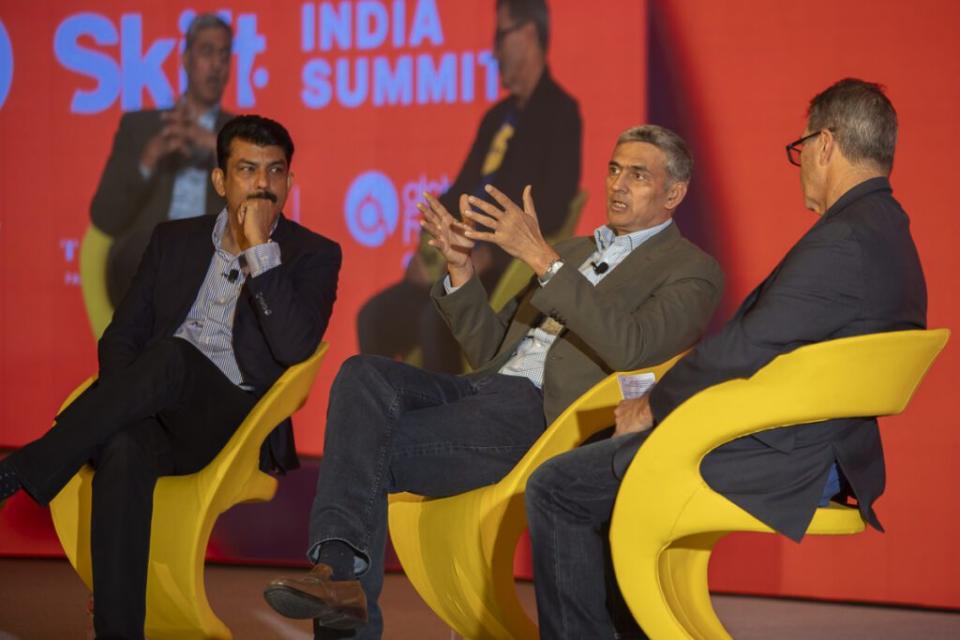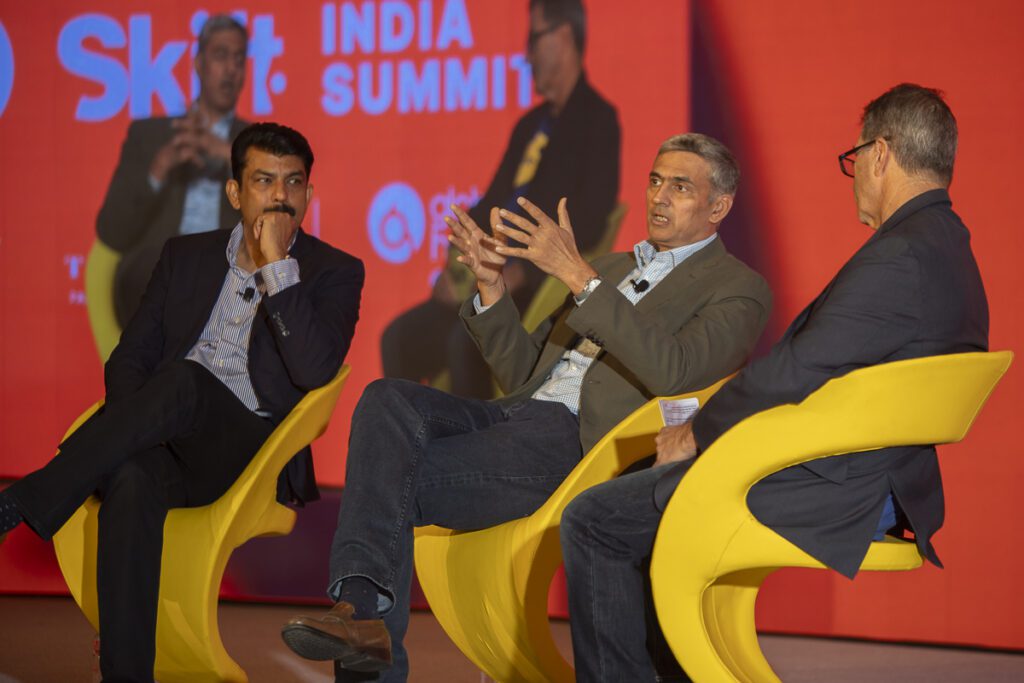
A bulging middle class, a mega-rich 1%, and a rapidly growing population are swirling to potentially make India a tourism superpower. But the country’s largest online travel agencies are not going to go to war; rather, they’re in a race for who can leverage the growth opportunities first and then on a long-term basis.
“I don’t lose sleep about some competitor doing something for a month,” said Dhruv Shringi, co-founder and CEO of Yatra Online at the Skift India Summit 2024 in Gurugram, India. He said that operators need a long-term plan for growing in India travel. “You need a strategy for long-term retention of customers.”
By 2027, India is slated to become the world’s fifth-largest outbound travel market, and as the world’s most populous country, is on a fast-track to become an immense domestic tourism hub.
Given the sheer size and potential of India tourism, there’s room for multiple competitors, said Rajesh Magow, co-founder and Group CEO of MakeMyTrip. “If you look 30 years from now, it’s a massive market. Whoever executes best will grow.”
“Look at the growth rates, you will only see this market growing,” Magow added. “That means there is room for many. It shouldn’t be drawing battles for the sake of it. Companies should focus on their own strategies rather than always obsessing over the competition.”
The two CEOs appeared together at the Skift India Summit in a session titled, “Where Will the Next Billion Travelers Come From?”
The India Domestic Market Is the ‘Big Daddy’ of Travel
In terms of how to capitalize on this huge market, both execs said that companies must master promoting domestic travel across the country and use technology to reach the growing middle class — particularly those not living in the major metro cities.
Shringi said: “Our ability now to reach customers is much easier. Through a digital platform now, it’s much easier. One of the key things now is pushing into tier-two market segments where travelers had the aspiration of travel, but only domestically.
“Domestic is the big daddy, but there’s a large international market to leverage,” as well.
Magow added: “This will support the domestic travel industry for sure. Demand is driving the opportunity. Income is rising across the board. There is an opportunity for domestic and outbound travel growth.”
Hyper localization within India will be key.
“The more you go region-specific, you see each region is essentially its own country. That gives an advantage to local players who understand the markets really well,” Magow said.
No Longer ‘Irrational’
According to both execs, competition in the India travel market has matured immensely in the past decade, stating intensive pricing competition has been muted.
Shringi said: “Even domestic aviation, it was hyper-competitive but now we’ve seen sanity return. It used to be irrational competition. Some pockets of travel just have higher competition but the market has matured significantly.”
Magow sounded a cautionary note.
“Competition is very healthy, you need it, it’s a huge market,” he said. “It is quite common to see people get carried away with the reach the internet provides, it may lead you to jump the gun and try to acquire customers you can’t reach.”
Get breaking travel news and exclusive hotel, airline, and tourism research and insights at Skift.com.










